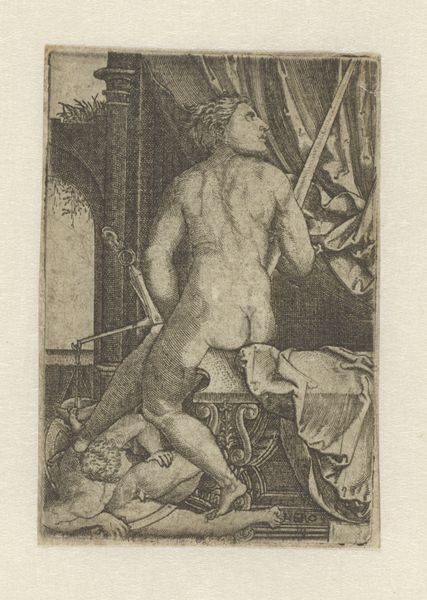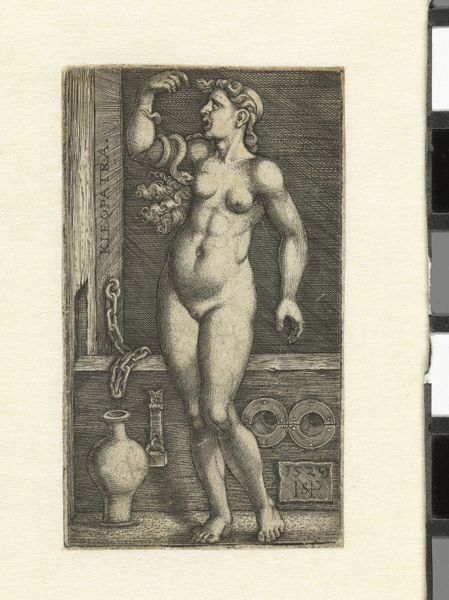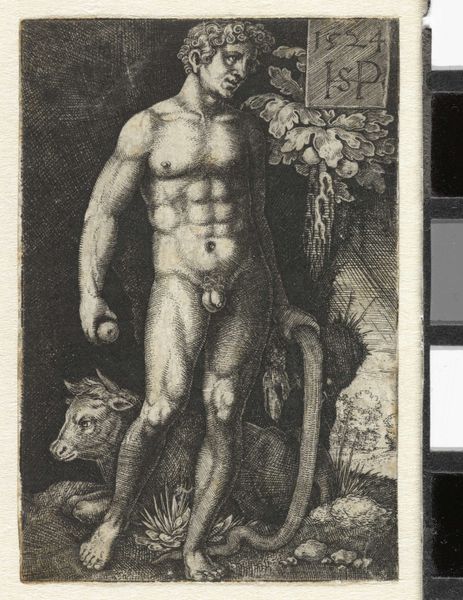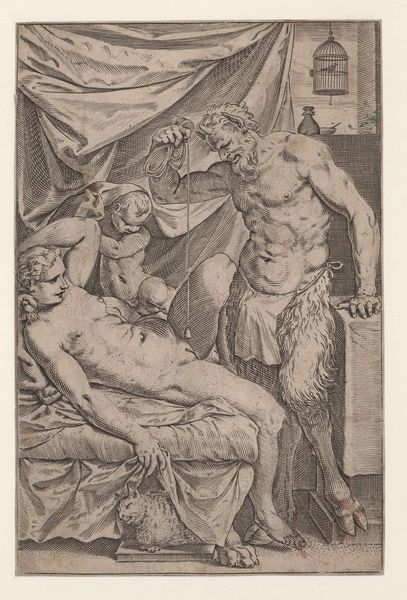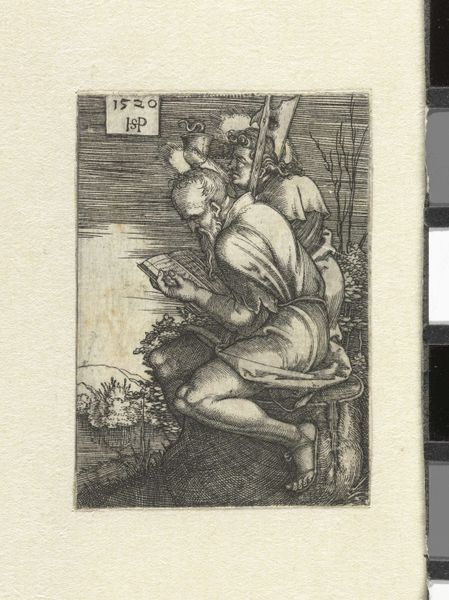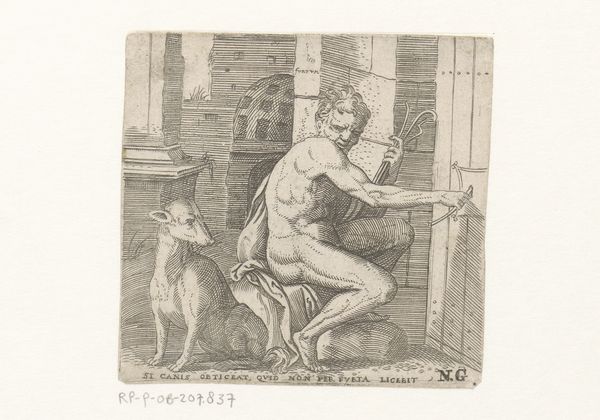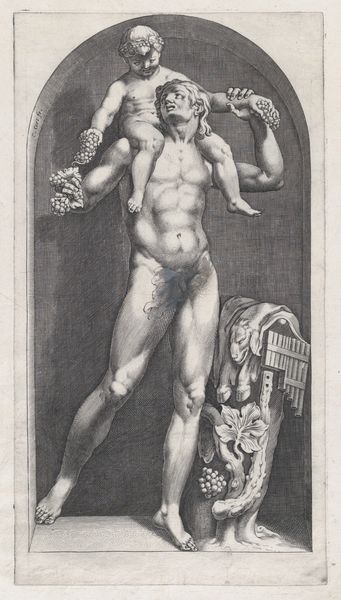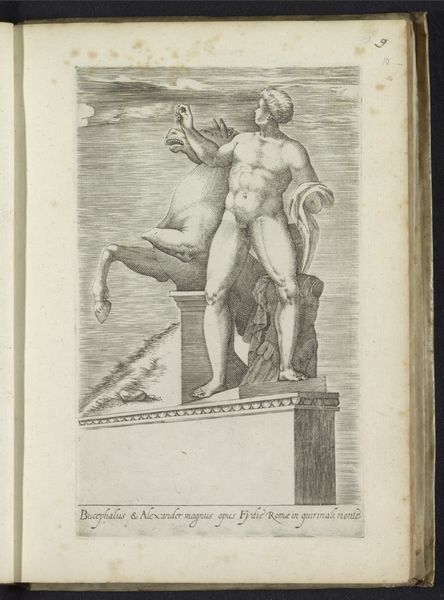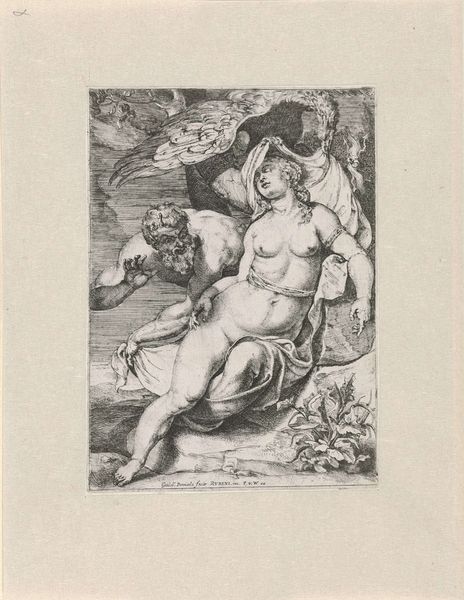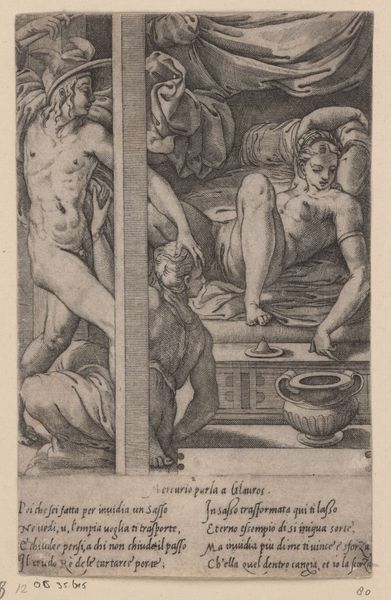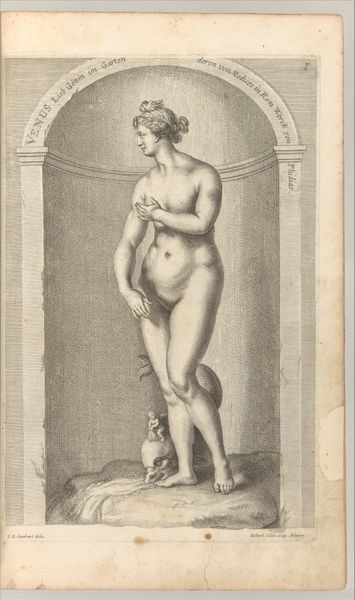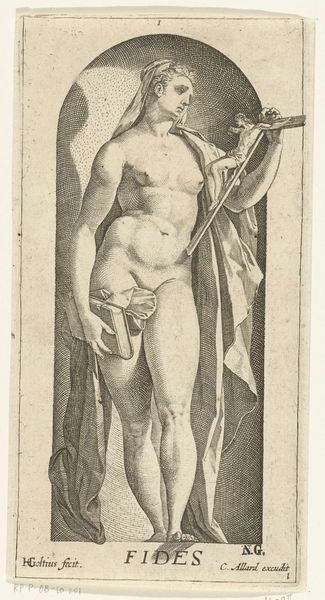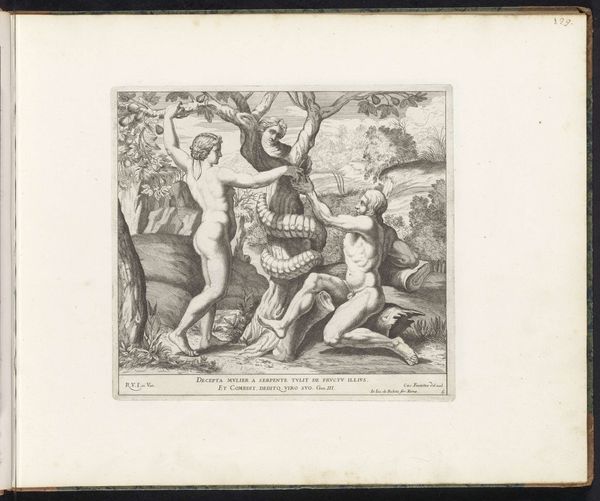
print, engraving
#
allegory
# print
#
old engraving style
#
figuration
#
11_renaissance
#
history-painting
#
nude
#
engraving
Dimensions: height 78 mm, width 55 mm
Copyright: Rijks Museum: Open Domain
Editor: So this engraving, "Vrouwe Justitia," from the 16th century by an anonymous artist, it’s striking. It feels... less about ideal justice and more about raw power. The figure is so muscular and nude. What can you tell me about how the image’s material production contributes to its meaning? Curator: Well, think about the *labor* involved. Engraving like this requires immense skill, hours of meticulous work to create this precise image. The very act of reproduction, making multiple images accessible, changes the reception of the concept of justice. Was it designed for legal professionals? Political leaders? Everyday citizens? Editor: That’s a good point. And the nudity… does it have a connection to the availability and cultural meanings of prints at this time? Curator: Absolutely. The widespread distribution of such prints allowed for a visual engagement with concepts previously confined to elite circles. Justice, now, could be contemplated, debated, even criticized in new ways, using and fueled by this method of reproduction. The artist may have sought to create an iconic representation but ended up creating something that entered the sphere of commercial exchange. Do you see how materiality is shaping the way we experience and discuss these ideals? Editor: I think so. It’s less about the intended message and more about the artwork’s life as a material object circulating in society and what power structures that supports. I suppose I had never considered those things before. Curator: Exactly. Seeing how art comes into being and moves through society shifts our focus from solely aesthetics to include broader implications of production and use.
Comments
No comments
Be the first to comment and join the conversation on the ultimate creative platform.
